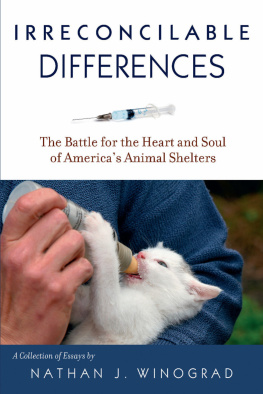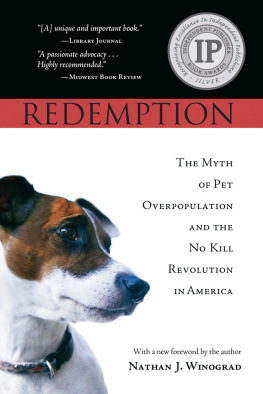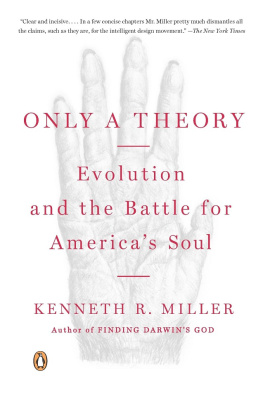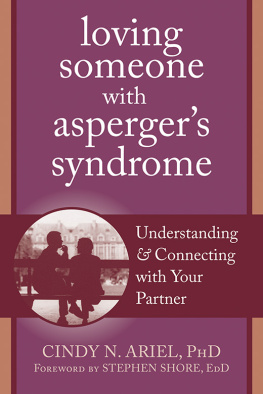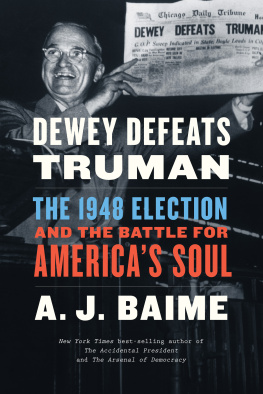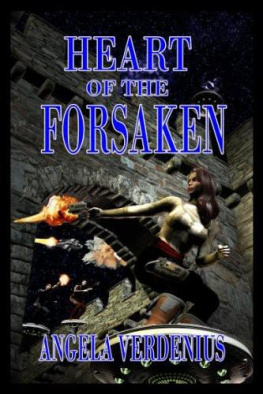Winograd - Irreconcilable differences: the battle for the heart & soul of Americas animal shelters
Here you can read online Winograd - Irreconcilable differences: the battle for the heart & soul of Americas animal shelters full text of the book (entire story) in english for free. Download pdf and epub, get meaning, cover and reviews about this ebook. City: Charleston;S.C;United States, year: 2009;2011, publisher: Booksurge, genre: Politics. Description of the work, (preface) as well as reviews are available. Best literature library LitArk.com created for fans of good reading and offers a wide selection of genres:
Romance novel
Science fiction
Adventure
Detective
Science
History
Home and family
Prose
Art
Politics
Computer
Non-fiction
Religion
Business
Children
Humor
Choose a favorite category and find really read worthwhile books. Enjoy immersion in the world of imagination, feel the emotions of the characters or learn something new for yourself, make an fascinating discovery.
Irreconcilable differences: the battle for the heart & soul of Americas animal shelters: summary, description and annotation
We offer to read an annotation, description, summary or preface (depends on what the author of the book "Irreconcilable differences: the battle for the heart & soul of Americas animal shelters" wrote himself). If you haven't found the necessary information about the book — write in the comments, we will try to find it.
Winograd: author's other books
Who wrote Irreconcilable differences: the battle for the heart & soul of Americas animal shelters? Find out the surname, the name of the author of the book and a list of all author's works by series.
Irreconcilable differences: the battle for the heart & soul of Americas animal shelters — read online for free the complete book (whole text) full work
Below is the text of the book, divided by pages. System saving the place of the last page read, allows you to conveniently read the book "Irreconcilable differences: the battle for the heart & soul of Americas animal shelters" online for free, without having to search again every time where you left off. Put a bookmark, and you can go to the page where you finished reading at any time.
Font size:
Interval:
Bookmark:
IRRECONCILABLE DIFFERENCES
Other Books by the Author
Redemption: The Myth of Pet Overpopulation and the No Kill Revolution in America
Praise for Nathan J. Winograd and Redemption
A WARDS
Silver Medal, Independent Book Publishers Association
Best Book, USA Book News
Muse Medallion, Best Book, Cat Writers Association of America
Award of Excellence, Dog Writers Association of America
First Runner Up, Hoffer Award for Excellence
P RAISE FOR THE B OOK
Redemption is a passionate advocacy for ending the killing of homeless dogs andcats in shelters. Telling the story of how the movement of animal sheltering in the United States was born of compassion and lost its way... Redemption offers hope that america can yet change its ways.
Highly recommended. Midwest Book Reviews
an important work. The Bark magazine
Within its pages, readers and animal lovers can find the blueprint not so much for our failure to save the animals in our communities, but for our ability to start doing so today.
San Francisco Chronicle (SFGate.com)
I cannot remember any work that has so dramatically altered my point of view on any subjectnor another book that has me so excited to think of what real reform can do to save the lives of shelter pets.
Petconnection.com
for anyone who has ever loved an animal, this book, like no other non-fiction, takes you through the full spectrum of emotions: from sadness to anger, from fear to hope. But redemption? That is ultimately left up to each and every one of us...
Air America Radio
[a] unique and important book. Library Journal
[T]he most provocative and best-informed overview of animal sheltering ever written. Animal People
IrreconcIlable DIfferences
The Battle for the Heart & Soul of Americas Animal Shelters
Nathan J. Winograd
Copyright 2009 by Nathan J. Winograd. All rights reserved. No part of this book may be used or reproduced in any manner whatsoever without written permission except in the case of brief quotations embodied in critical articles and reviews. For information, address the author at www.nathanwinograd.com.
First Edition
Cover and Interior Design: Judith Arisman, arismandesign.com
Cover Photograph: Simone van den Berg, junglefrog.com
Printed in the United States of America
To my wife, Jennifer.
Aside from helping create a better world for animals, she is my otherand foremostpassion in life.
A note about the essays in this book:
Because I wanted each essay to stand on its own, there will be some repetition between them for clarity. This is intentional.
Table of Contents
1866(New York city) Henry Bergh launches humane movement with the founding of the American society for the Prevention of cruelty to animals (ASPCA).
1872(Philadelphia) Womens Humane society veers off course by becoming the first private humane group to take over the pound.
1888(New York city) Henry Bergh dies. Against his wishes and justifying his fears that the ASPCA will sabotage its mission, the ASPCA takes over the pound and becomes the leading killer of dogs and cats in New York city.
20th century(United States) Many humane societies and SPCAs take over pound work and do little more than kill animals.
1971(Los Angeles) Mercy crusade opens first municipally funded spay/neuter clinics in the United States. Intakes and deaths plummet, showing killing can be prevented through community-based programs.
1974(chicago) Humane society of the United States, American Humane association, and the ASPCA have first great meeting of the countrys animal welfare leaders to discuss surplus dog and cat problem. The conclusion: ownerless animals must be destroyed. It is as simple as that.
1976(Denver) Humane society of the United States, American Humane association, and the ASPCA meet again. In deference to veterinarians who erroneously feared a loss of profits, they discuss and subsequently reject the Los Angeles model of publicly funded low-cost spay/neuter programs despite its documented success; reaffirm policy of killing.
1994(San Francisco) Under the leadership of Richard Avanzino, San Francisco ends the killing of healthy, homeless dogs and cats in the city, launching the No Kill revolution.
1994(United States) Humane society of the United States and others begin propaganda campaign to downplay the success of San Francisco.
2001/2002(Ithaca) Tompkins County, New York, becomes first No Kill community in U.S. History.
2007(United States)) Redemption: The Myth of Pet Overpopulation & The No Kill Revolution in America is published, undermining the claim that killing is necessary and changing the debate nationwide. The number of voices calling for an end to the killing multiplies.
2007-present(United States) No Kill success spreads nationally. Groups like HSUS are forced to soften their anti-No Kill rhetoric and begin to modify policies which favor killing.
How many dogs and cats enter U.S. Shelters annually? 8 million.
Of those, how many are savable? over 90 percentjust over 7 million.
How many savable dogs and cats will actually be saved? 4 million.
How many savable dogs and cats will be killed? 3 million.
Of those killed, how many savable dogs and cats need a new home (i.e., adoption)? If shelters are doing their jobs comprehensively, just over 2 million (3 million on the high end). The remainder includes lost strays who should be reclaimed by their families and feral cats who should be neutered and released.
Other than those who will always adopt from a shelter (those saved above), how many people in the United States are considering a new dog or cat next year who would also consider adoption from a shelter? 17 million. Consequently, even if roughly 80 percent get an animal from a source other than a shelter, killing of healthy and treatable animals can be ended.
Are shelters doing all they can to influence those people to adopt from them? no. A potential adopter writes: I tried to adopt from my local shelter, but they werent open on the weekend, it was almost impossible to reach them on the telephone and when I did, I was treated rudely. Nonetheless, I raced down there one day after work, and the place was so dirty. It made me cry to look into the faces of all those animals I knew would be killed. But I found this scared, skinny cat hiding in the back of his cage and I filled out an application. I was turned down because I didnt turn in the paperwork on time, which meant a half hour before closing, but I couldnt get there from work in time to do that. I tried to leave work early the next day, but I called and found out they had already killed the poor cat. I will never go back.
Have any communities adopted their way out of killing? Yes, No Kill communities now exist in all parts of the country.
How long did it take them? They did it virtually overnight when new leadership, committed to the No Kill philosophy and passionate about saving lives, replaced bureaucrats mired in killing.
Why dont shelters do better? a failure of leadership among the national animal welfare groups, a crisis of uncaring among shelter managers, unfettered discretion to avoid putting in place the programs and services that save lives, and the false excuse of pet overpopulation.
M Y BOOK Redemption: The Myth of Pet Overpopulation & The No Kill Revolution in America , documents how the humane movement, founded on the highest ideals of compassion, devolved into a system of humane societies and other shelters that is the leading killer of dogs and cats in the United States. Redemption also shows how in 1994, despite massive opposition from organizations all over the country, the San Francisco society for the Prevention of cruelty to animals (SPCA) spearheaded an effort that achieved the impossible: saving every healthy homeless dog and cat in the city. In doing so, it fought an entrenched leadership at the San Francisco animal control shelter intent on defending the indefensible status quo, opposition from virtually every shelter director in the contiguous counties, and a propaganda campaign by national animal protection groups threatened by the citys emerging success. But these voices which championed the tradition of killing discounted the very power that assured their defeat: the great love of dogs and cats by san franciscans and the larger American public.
Next pageFont size:
Interval:
Bookmark:
Similar books «Irreconcilable differences: the battle for the heart & soul of Americas animal shelters»
Look at similar books to Irreconcilable differences: the battle for the heart & soul of Americas animal shelters. We have selected literature similar in name and meaning in the hope of providing readers with more options to find new, interesting, not yet read works.
Discussion, reviews of the book Irreconcilable differences: the battle for the heart & soul of Americas animal shelters and just readers' own opinions. Leave your comments, write what you think about the work, its meaning or the main characters. Specify what exactly you liked and what you didn't like, and why you think so.

